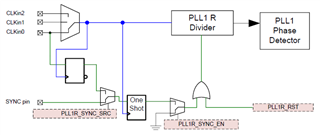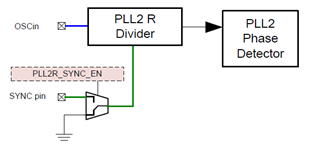We are noticing the highlighted statement below in the LMK04832 clock chip and are wondering what the setup and hold times are (specific values) that need to be met and which clock they are relative to in the context of the paragraph below? We didn’t see a timing table or diagram for the sync line.
Refn Section 8.3.1.2 of the datasheet....




